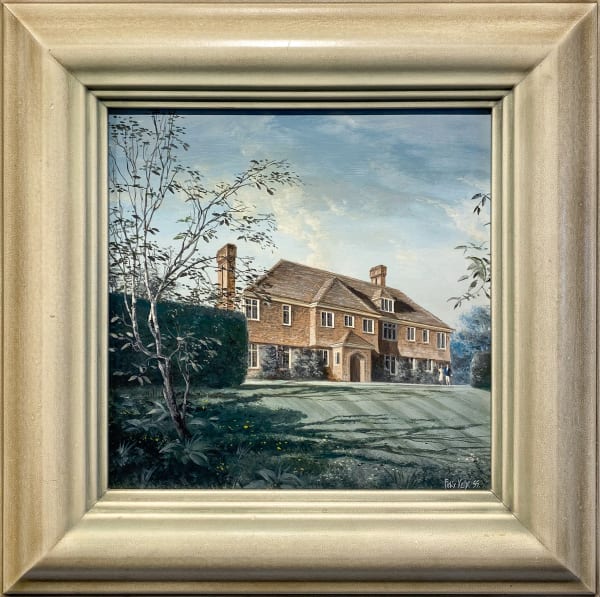Felix Kelly New Zealand, 1914-1994
-
 Felix KellyCastlehyde House, County Cork, 1954Oil on board56.5 x 71 cmSigned & dated '54
Felix KellyCastlehyde House, County Cork, 1954Oil on board56.5 x 71 cmSigned & dated '54 -
 Felix KellyOldany House Overlooking the River Alde Near Aldeburgh, Suffolk, 1955Oil on board28 x 28 cmIllustrated: 'Country Life', September 12, 1957Signed & dated 1955
Felix KellyOldany House Overlooking the River Alde Near Aldeburgh, Suffolk, 1955Oil on board28 x 28 cmIllustrated: 'Country Life', September 12, 1957Signed & dated 1955 -
 Felix KellyRock Cliff, Bellevue Ave, Newport, Rhode Island, 1948Tempera on card33 x 40 cmExhibited: Portraits Inc., New York
Felix KellyRock Cliff, Bellevue Ave, Newport, Rhode Island, 1948Tempera on card33 x 40 cmExhibited: Portraits Inc., New York
Signed lower right & dated 1948
Felix Kelly was born in Auckland on February 3rd 1914. In 1939 he moved to London, where he worked as a graphic artist and designer for Lintas, the advertising wing of Unilever.
During the Second World War he served in the Royal Air Force and was commissioned as a navigating officer, concerned with the delivery of fighters to operational units. In his spare time he began to paint seriously, holding his first one man exhibition at the Lefervre Gallery in 1943. The same year he received his first important book commission – for Herbert Read’s The Green Child. An early enthusiast for Kelly’s work, Read introduced him to a number of significant clients and wrote a foreword to Paintings by Felix Kelly, (1948). Kelly began to exhibit bi-annually at Partridge Fine Arts in Bond Street; his work was collected by American clients, and he subsequently exhibited in New York and Washington.
Handsome and charming, Kelly was popular socially and spent much of his time like a latter-day Augustus Hare, staying at the grander country houses.
He embellished or redesigned many of these houses for friends and clients. At Castle Howard he designed the ‘Kelly car’, a little fairground-style train for conveying visitors round the grounds. At Henbury Hall he gothicised ‘the Cave’ for Sebastian de Ferranti and played a key role in the design of the new Villa Rotunda built there in 1985.
At Cornhill-on-Tweed, Kelly designed a Gothic dowerhouse for Sir Michael Blake. His main work though, was the remodeling of Highgrove in Gloucestershire for the Prince of Wales. He refaced the gawky Victorianised facades and gave them new plastered and pedimented frontispieces in the manner of Francis Keck, successfully returning the house to a Georgian character.
His other decorative work ranged from murals in a number of Union Castle and Cunard liners to the interior of the new Royal palace for the King of Nepal in Kathmandu. Kelly also designed for the stage, including the sets of A day by the Sea at the Haymarket, Lennox Berkeley’s opera Nelson at Sadlers’ Wells, The Merchant of Venice at the Old Vic and Enid Bagnold’s The Last Joke at the Phoenix.
All Felix Kelly’s paintings were meticulously executed, with precisely realised architecture set against misty landscapes of drooping ivy-swathed trees or craggy peaks. In the foreground might be steam trains, canal barges or a red and white striped deckchair. The latter was something of a trademark, but did not always meet with the approval of his more literal minded clients, “That will have to come out,” said one on seeing a deckchair in Kelly’s view of his house,” I never allow anything to be put on my lawns“.





